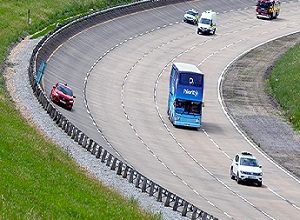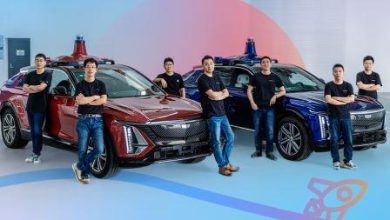Framework for Hawaii’s autonomous vehicle future released

Ulupono Initiative in association with Me3 on 12th May 2020 released a new report, titled “Framework for Hawaii’s AV Future: Accessible, Automated, Connected, Electric, and Shared,” outlining strategies that would help Hawaii chart its own autonomous vehicle (AV) and mobility future clearly.
“Autonomous vehicles can be a threat or a part of the solution,” according the report’s author, Kelley Coyner, founder and CEO of Mobiltye3 (Me3). “Whether Hawaii is ready, automated vehicles and other disruptive technologies continue to proliferate. COVID-19 has highlighted opportunities to strengthen vital supply chains with automated and electric mobility from trucks to shuttles to e-cargo bikes. The chance is now to create an accessible, automated, connected, electric, and shared (A2CES) mobility future that promotes equity, the environment, and economic opportunity for all in Hawaii.”
Beginning in fall 2018, Ulupono Initiative collaborated with local and state government agencies to bring stakeholders together to lay the groundwork for accelerating development and deployment of AVs to maximize associated benefits to the people of the state. Me3 helped to articulate an A2CES vision of mobility and recommend a framework of private- and public-sector collaboration. According to Coyner, this framework provides an actionable roadmap to achieve economic sufficiency for Hawaii, reach renewable energy goals, and give those who cannot drive more autonomy through mobility.
“Few other communities are as immediately impacted by the shifting balance of global climate and the urgent necessity to identify and implement sustainable solutions,” said Murray Clay, president of Ulupono Initiative. “Ground transportation represents a tremendous opportunity because we import about a third more gallons of fossil fuels for ground transportation as for electricity production. Legal, safety, policy, infrastructure, planning and mobility innovation issues will all have to be addressed across broad and varied disciplines to improve equitable access to opportunities, reduce reliance on fossil fuels, and realize economic opportunities.”
The A2CES report acknowledges that Hawaii is in some ways already a leader in autonomous transportation. For example, Gov. David Ige’s signing of Executive Order 17-07 (Autonomous Vehicle Testing) made Hawaii the first state to identify its airport for deployment of autonomous shuttles. In addition, Honolulu is moving closer to opening the first stage of its automated rail transit system, joining Vancouver and Copenhagen with an automated elevated metro that will be the first fully driverless system in the United States.
However, the report describes “disruptive technologies” as having “turned upside down the regulatory paradigm” and purports that the effect of Hawaii’s accomplishments is lessened due to a lack of clarity over the conditions for deploying these vehicles on public roadways.
The report proposes five key strategies for Hawaii to shape its A2CES future:
- Confirm the legal framework for safe operation of AVs on public roads including developing guidance or regulations.
- Adopt policies and initiatives at the state and local levels designed to ensure the public’s interest in equitable and environmentally sound travel that is powered by renewable energy and promotes economic vitality.
- Bake A2CES readiness, including electric charging from renewable resources, into public and private sector investments including rail stations, rail catchment areas, station access, and roadway and multimodal pathways.
- Incorporate AV and electric vehicle considerations into all aspects of planning, public and private, so that the vision of A2CES is recognized and realized through land use, economic development, and transportation planning.
- Launch a program of A2CES-focused technology demonstration projects across modes, while prioritizing projects that expand renewable resources.


